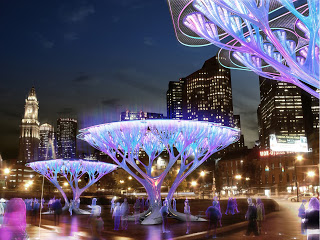
With the earth’s population ever growing, air pollution and air quality is a major issue for many countries around the world. Air pollutants can lead to respiratory related illnesses in humans and animals, create acid rain, and deplete the ozone layer. Actions such as carpooling, reducing the use of fossil fuels, and simply turning off a light when leaving a room are all ways that reduce harmful CO2 levels in our atmosphere. There is also a natural source that eats away at harmful CO2 gases and that source is trees.
Trees act like nature’s lungs. They take in CO2 gases from the air and then use those gases for energy during the photosynthesis process. A byproduct of photosynthesis is oxygen. Over the course of a year, one tree can absorb up to 13 pounds of CO2 gases. The loss of trees in cities has had devastating results. Heavy levels of CO2 gases in cities create thick smog and affect the natural ecosystem of the land. These concentrated levels of CO2 gases create a hostile environment for trees and plants, making it difficult for them to grow properly.
Knowing the benefits, Dr Klaus Lackner, Director of the Lenfest Center for Sustainable Energy at Columbia University, came up with an innovative idea to reduce CO2 emissions in urban environments. Taking from his daughter’s prize winning 8th grade science fair project, Dr Lackner designed a machine that would pull CO2 from the air. Lackner’s daughter’s project proved that CO2 could be extracted from the air by using a fish tank pump and a battery. Lackner took his daughter’s idea further by designing his structure to act like a living tree.
Inspired by Dr Lackner’s discovers, in Boston, MA, the Boston Treepod Initiative, developed by Mario Caceres and Christian Canonico of Influx_Studio from Paris France, in collaboration with ShiftBoston are proposing to use this environmental friendly technology to help curb CO2 gases in the city. By using biomimicry, or drawing inspiration from nature, Influx_Studio developed their tree-like structure to be powered by both solar and kinetic energy. Their artificial tree mimics what real trees do. It scrubs CO2 from the atmosphere and emits O2 and uses its own power to do so.
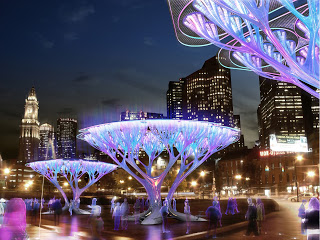
To make their design more appealing to the eye, the international team drew inspiration from the dragon blood tree. The dragon blood tree is a prehistoric looking tree that grows in arid, dry climates. It has wide branches that form umbrella looking tops that provide wide swatches of shade on the ground below. Influx_Studio chose the dragon blood precisely for this reason. They needed a wide platform that could hold the sizeable solar panels that they would need to help power the tree.
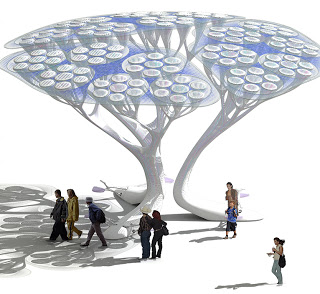
This young French team through trial and error realized that solar power would not be sufficient enough to fully power their trees. They decided that kinetic energy derived from human interaction would serve as an ancillary power source because of its simplicity. The team then concluded that by making their tree interactive it would beckon passersby to play with it. The Boston Treepods Initiative also proposed for the trees to be placed in groups or pods because this will increase their effectiveness. Joined together by see-saws and hammocks, the grouping of artificial trees instantly creates a small, but inviting urban park. As the hammocks and see-saws are used by visitors kinetic energy is created, thus helping power the CO2 extracting pumps.
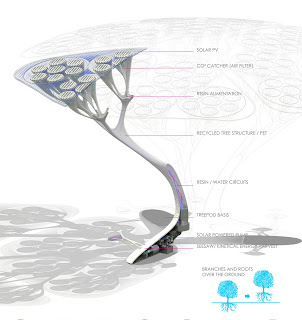
If the city of Boston were to benefit from the Treepods, the concept could be easily and cheaply replicated in polluted cities all over the world. The Treepods could be exceptionally beneficial in cities where smog levels are so high that natural trees and plants have a difficult time growing in. Treepods could also be successful in creating a healthier environment for people and animals in and around the city. Respiratory illnesses would also most likely drop in numbers.
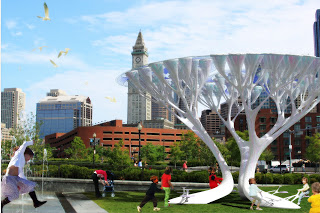
What other places do you think could benefit from Treepods? And what other types of air cleaning devices can you design? We’ll keep an eye out for Treepods coming to a city corner near you!